Such facilities offer a unique combination of medical, psychological, and holistic approaches tailored to the individual’s needs. One specific mechanistic aspect of this literature that has not been thoroughly explored is the role of specific conflict behaviors and dyadic processes (both adaptive and maladaptive) in influencing alcohol craving as well as risk for lapse and relapse in AUD. This literature could be advanced through innovative intersections of multi-method approaches that link laboratory, neurobiological, and naturalistic data, such as incorporating traditional clinical trial designs with micro-longitudinal and remote assessment methods. Such data might be used to inform novel and accessible adjunct interventions and tailored treatment modifications to insulate people with AUD and their families from high-risk situations. Despite the abundance of rigorously conducted studies and findings supporting the efficacy of dyadic AUD treatment, evidence-based couple and family therapies are rarely applied in frontline treatment settings. Literature identifying barriers to provider uptake and patient utilization is also limited.
- Contact us today to learn more about the resources we have to support your recovery.
- The only true requirement for attending these programs is a desire to understand addiction’s impact on family members and the addicted person.
- Together, you can overcome alcohol use behaviors and embrace a new family dynamic where individuals feel valued and heard, and unhelpful behavior patterns are a thing of the past.
- It’s common for family members and friends to feel helpless and unsure of how to support their loved one struggling with addiction.
It focuses on family structure and education for family members with a loved one struggling with substance use. Our Multiple Pathway Partners specialize in clinical and other treatment services for addiction, mental health and more. A great deal has been learned to date regarding efficacious family and couple treatment models. However, the empirical literature is also clear that AUD is a condition characterized by a great deal of heterogeneity in etiology, course, and factors influencing treatment outcomes. The following section describes treatment considerations for populations that might require tailored treatment considerations and adaptations to optimize outcomes.
The Role Of Family In Addiction Recovery
At 2-year follow-up, they compared family functioning for men who were in recovery to men who had relapsed. Advancing research, practice, and policy agendae to increase family involvement in treatment and recovery for SUD among transition-age youth remains an arduous path. Prominent gaps and barriers to involving families in youth SUD services exist at multiple levels.
- When you begin your journey toward recovery, your family members may also need the support of mental health professionals.
- Beyond aspiration, actually transforming SUD systems of care to become relationship-oriented will require greater system-wide attunement to familial relationships and to cultural context characteristics that shape user experiences of SUD services (Kirmayer et al., 2016).
- Remember to look after yourself, too, and never lose hope that with the right support and resources, your loved one can beat addiction.
- Family members who understand addiction as a disease are better equipped to provide the support needed for recovery.
- Leveraging existing study data and using qualitative data collection techniques to identify barriers and methods to overcoming barriers are also needed.
- AUD harms individual family members and the functioning of the family as a whole, and family members’ actions may exacerbate problematic drinking.
In accord with a family collaboration approach (Hornberger & Smith, 2011), providers can adapt family engagement interventions (described above) with the intent of cultivating RSS management partnerships with family members. As needed, providers can also select evidence-based family interventions (described above) as the focal approach or a featured component of booster treatment activities scheduled during recovery periods. A similar option, but with a thin evidence base, is family recovery programs that convene groups of affected family members to explore family change and wellness processes (Buckley-Walker et al., 2017; Toumbourou & Bamberg, 2008). And there is clearly a market for, but scant research on, DTC resources designed to improve parenting habits as a facet of SUD recovery management (see Becker et al., 2017). Recent surveys conducted in outpatient (Ryan-Pettes et al., 2019) and justice settings (Folk et al., 2020) found that most caregivers desired ongoing DTC support on parenting during aftercare. As seen in Figure 1, treatment engagement in youth behavioral services begins with first contact between client and provider, usually termed outreach (Becker et al., 2015).
Providing emotional support
For those with a loved one in mental health care, the National Alliance on Mental Health (NAMI) provides family support groups. During sessions, peers discuss their experiences to foster understanding and hope. You may work on coping skills, forgiving family support in addiction recovery yourself for past mistakes, releasing judgment, and embracing resilience. However, it’s important to remember that addiction is a disease, and like any other chronic illness, it requires professional treatment and support to overcome.

Given the near-ubiquity of smartphones (Smith & Page, 2015) and widespread use of the internet among youth and adults (Pew Research Center, 2020) in the US, providers can employ a comprehensive range of tele-engagement strategies. Tele-intervention’s low-cost remote delivery allows increased reach to groups with traditionally https://ecosoberhouse.com/article/the-hidden-effects-of-binge-drinkin/ limited access to SUD services, which can reduce troubling disparities for underserved areas and populations (Gros et al., 2013). Tele-engagement also creates opportunities to counter traditional barriers to family involvement in care (see Baker-Ericzén et al., 2013) that can be protocolized and tested.






Leave a Reply